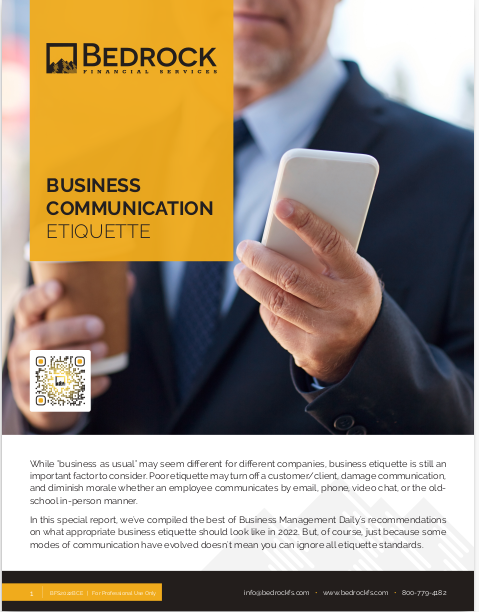Key Takeaways
-
Clients often ask about a handful of core insurance products. Your ability to explain them clearly and succinctly determines whether they move forward or move on.
-
What you say matters just as much as how you say it—avoid jargon, clarify options, and address concerns without overwhelming.
The Usual Suspects: What Clients Ask About Most
When clients reach out to you, they’re rarely starting from scratch. By the time they arrive at your door (physical or digital), they’ve already searched online, heard something from a friend, or been contacted by someone else. What they want now is clarity.
Most of your conversations will orbit around a predictable group of insurance products. These aren’t just what they want to hear about; these are what they expect you to be ready to explain.
Life Insurance
Life insurance consistently tops the list. It’s not just because of its importance—it’s also one of the most misunderstood types of coverage. Here’s how to break it down:
-
What to say:
-
Focus on function first: “Life insurance is meant to replace income, pay off debts, or leave something behind.”
-
Introduce the two primary types quickly: term vs. permanent.
-
Emphasize timelines and costs without naming private plan prices. For instance, term lasts for a set number of years, while permanent coverage continues for life.
-
Highlight how needs shift: younger clients often ask about term, while older clients might inquire about final expense or cash value growth.
-
Health Insurance
While many clients have coverage through employers or government programs, you’ll often field questions about private or supplemental options. These discussions require extra care because regulations and pricing vary.
-
What to say:
-
Start with structure: “Health insurance is there to protect you from high medical bills by sharing the cost.”
-
Explain the role of deductibles, copays, and out-of-pocket limits in plain language.
-
Clarify timelines—many people are confused about enrollment windows or think they can sign up anytime.
-
Address affordability concerns without using price figures. Instead, say: “Plans vary widely in cost based on age, coverage level, and network.”
-
Medicare
For clients turning 65 or helping a parent, Medicare is one of the most common topics. In 2025, the program has several moving parts that must be explained simply.
-
What to say:
-
Break it down into its four parts: A, B, C, and D.
-
Clarify that Part A covers hospital care and Part B covers outpatient services—both with defined premiums and deductibles in 2025.
-
Highlight that most people enroll during their Initial Enrollment Period (a 7-month window around their 65th birthday).
-
Let them know some costs can be capped or reduced by additional coverage, but steer clear of promoting specific plans.
-
Disability Insurance
Less frequently asked about but crucial, disability income protection matters for working clients in their 30s to 50s.
-
What to say:
-
Define the core idea: “This helps replace your income if you’re unable to work due to illness or injury.”
-
Emphasize the difference between short-term and long-term coverage.
-
Address common misconceptions, such as, “My job covers it,” or “I’ll rely on savings.”
-
Mention the timeline: short-term plans typically cover up to 6 months, while long-term may continue until retirement.
-
Long-Term Care Insurance
This comes up primarily with clients in their 50s or older. In 2025, as healthcare costs continue to rise, long-term care remains a growing concern.
-
What to say:
-
Paint the scenario: “If you needed daily help with basic tasks, how would you pay for it—without draining your savings?”
-
Explain it covers services like assisted living, home care, and nursing home stays.
-
Note that Medicare does not typically cover long-term custodial care.
-
Emphasize that earlier is better—costs rise with age and health conditions.
-
Annuities
Clients don’t usually lead with annuities—but they do ask when they’re nearing retirement or concerned about outliving their savings.
-
What to say:
-
Define it clearly: “An annuity converts your savings into a steady stream of income, often for life.”
-
Differentiate between immediate and deferred options.
-
Be transparent: “This is a long-term tool, and you’ll want to understand the tradeoffs before moving forward.”
-
Avoid product specifics and focus on the concept of guaranteed income.
-
Questions You’ll Hear (and How to Handle Them)
Knowing what clients ask is only half the battle. The rest is being ready to answer with clarity and confidence.
“Is this really worth it?”
Every client wants to feel their money is well spent. Avoid hype. Instead, ask what they’re hoping to protect—loved ones, income, savings, retirement—and then tie the answer to that motivation.
-
Say this: “If something unexpected happened tomorrow, would your finances take a hit? That’s what this protects.”
“How much coverage do I need?”
This question comes up in nearly every insurance conversation. Use ranges, not hard numbers, and guide the client to think through needs rather than pushing a product.
-
Say this: “Let’s look at your income, debts, family size, and goals. That helps us estimate a meaningful amount.”
“Can I change my mind later?”
Flexibility matters. Clients want to know they’re not locked in forever. Answer honestly but encouragingly.
-
Say this: “Many policies let you make changes or add coverage over time. Let’s look at what options are built in.”
“What if I can’t afford it right now?”
This objection can derail a sale or open a new direction. Your job is to reassure without overselling.
-
Say this: “We can look at coverage that fits your current budget, and revisit options down the road as things change.”
Phrases That Help Clients Understand More Clearly
Sometimes it’s not about the facts—it’s about how you phrase them. Use analogies and comparisons that help clients process abstract concepts.
-
“Think of term insurance like renting coverage—permanent is more like owning it.”
-
“An annuity is like a pension you create for yourself.”
-
“Disability insurance is your income’s backup plan.”
-
“Medicare Parts A and B are your foundation—other coverage options are built on top of that.”
Avoiding Jargon While Still Sounding Professional
You don’t need to oversimplify or talk down to clients—but jargon will always cause confusion. Keep your explanations polished but accessible.
-
Replace “premium” with “monthly payment.”
-
Swap “underwriting” for “review process.”
-
Use “coverage amount” instead of “death benefit.”
-
Avoid acronyms unless you immediately define them.
Your tone should be confident but warm. Your goal is understanding, not authority.
What Clients Appreciate Most in 2025
Insurance trends change, but client values stay consistent. In 2025, clients want:
-
Transparency: Don’t gloss over tradeoffs. Be upfront about what a policy does and doesn’t do.
-
Simplicity: Explain options with minimal overwhelm.
-
Support: They want to know someone will answer when they call.
-
Time to Decide: Hard closes rarely work. Give space and follow up with helpful info instead.
Position Yourself as a Trusted Resource
You’re not just selling coverage—you’re helping clients prepare for life’s curveballs. The more confident and clear you are, the more likely they are to stick with you long-term.
-
Keep conversations educational, not transactional.
-
Use charts, visuals, or one-page summaries when appropriate.
-
Offer to revisit decisions regularly—annually or at life milestones.
Make Client Conversations Count with the Right Support
If you’re having the right conversations but still losing clients to confusion or competing noise, it’s time to elevate your approach. That’s exactly where we come in.
At Bedrock Financial Services, we help professionals like you turn expertise into consistent growth. From automated appointment setting to simplified training tools and branded visuals, we provide what you need to educate clearly, follow up faster, and close with confidence.
Sign up today to see how our systems can free you up to focus on what matters most—building trust with every conversation.







